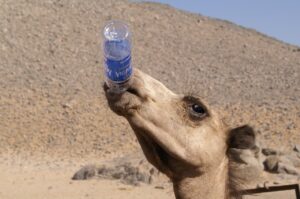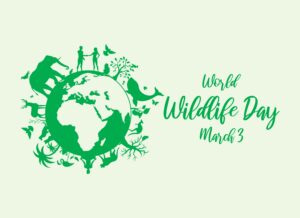Plants, animals, water, land, the atmosphere, and people are all examples of the Earth’s natural resources. Due to human error in the previous forty years, including deforestation, overcrowding, climate change, animal exploitation, and consumer culture, the globe has lost an enormous number of species.
According to experts, the rate at which species are disappearing from the planet is 1,000–10,000 times greater than the rate of natural extinction. The preservation of biodiversity is crucial for the planet’s sustainability. A sustainable future depends on wildlife conservation, which involves preserving endangered plant and animal species.
What is Wildlife Conservation?
The world population is expected to continue growing quickly, which suggests that natural resources will be used up more quickly. In particular, this growth displaces plants and animals for agricultural or land development. According to scientists, the world population will experience long-term stability through the sustainable use of animals.
Sponsered4
Wildlife conservation is the technique of preventing the extinction of particular animal and plant species as well as their environment. The ecosystem’s fauna contributes to the stability of natural processes. Education about how to coexist effectively with other species is another goal of wildlife conservation, in addition to preserving animal and plant species.
Global animal and habitat conservation has received funding from a wide range of national and international organizations, including Conservation International, the animal Conservation Society, World Wildlife Fund, and the United Nations. They work along with governments to create wildlife refuges and national parks. These groups work to preserve current species while promoting biodiversity to sustain the human population.
Loss of Biodiversity- A Threat to Humanity
One of the top five threats to humanity in the next 10 years, according to the World Economic Forum’s 2020 Global Risk Report, is the loss of biodiversity, which might cause the ecosystem to collapse. Human culture and economies have been reliant on biodiversity since prehistoric times. Humans all throughout the world have used countless plants and animals in their daily lives for things like food, furniture, and housing.
Sponsered4
One of the most important organizations for promoting wildlife conservation through the control of international trade is the Convention on International Trade in Endangered Species (CITES). They have created a framework that controls how species and their habitats are used, promoting both conservation and human well-being in the process.
These multinational communities have combined sustainable development and animal conservation. To safeguard the remaining animal species on Earth, this is a crucial step. The fauna and other elements of nature have been severely impacted by rapid urbanization and other similar developments. As an illustration, whale shark populations are quickly dropping as a result of fishing and illicit poaching, and many vulture species are in danger of going extinct.
African carnivores including the African lion, cheetah, leopard, and wild dog are among the species that CITES has prioritized for conservation. In order to prevent the extinction of animal and plant species, scientists, governments, the commercial sector, and numerous other groups have joined together.
Sponsered4
Can We Link Wildlife Conservation with Sustainable Future?
Surprisingly, researchers have connected animal preservation to a sustainable future. They made other connections between this idea and the abolition of hunger and poverty as well as the development of both human and environmental health. Governments were pulled together by a number of organizations, like CITES, to create a global biodiversity framework, strengthening conservation efforts.
There are numerous instances when wildlife protection has produced sustainability. The CITES Convention outlawed the trade in vicuas (Lama vicugna), an animal species native to the South American Andes that was nearly driven to extinction due to overexploitation for its superior wool fiber. National vicua populations subsequently recovered, and certain subspecies have been permitted to resume a controlled trade.
A program to gather vicua fiber has been in place in Bolivia since 2007, and it has quickly grown into an industry that contributes around 20% of the nation’s exports. This program strengthened local communities without putting vicuas in peril. This species is presently categorized as being “Least Concern” for extinction on the Red List maintained by the International Union for Conservation of Nature (IUCN). Similar to this, controlled seawater crocodile harvesting by Aboriginal people in Australia’s Northern Territories has proven to be advantageous for both the economy and the ecology.
Sponsered4
Importance of Global Frameworks to Conserve Wildlife
In light of the current crisis of biodiversity loss, it is crucial to emphasize the value of wildlife conservation for a sustainable future. According to research, the adoption of a worldwide framework for trade regulation as well as government initiatives to strengthen communities have helped to increase the protection of land, animal, avian, and marine species. This demonstrates that controlled commerce can be profitable without putting a species in danger of becoming extinct.
The use of the CITES framework for the conservation of wildlife has been shown to be advantageous for both animal and plant species as well as the people who depend on them.
Food security has been a result of wildlife protection. The process of sequestering carbon is aided by preventing deforestation and regenerating forest areas to maintain biodiversity. By absorbing and storing atmospheric carbon dioxide, this method helps to lower the atmospheric concentration of the gas.
Sponsered4
Additionally, protecting wildlife fosters agricultural diversification. According to research, a healthy ecosystem and biodiversity are essential in acting as a barrier between illness and people. Several studies have also shown that a decline in biodiversity increases the spread of human-to-animal illnesses.
Sponsered4




